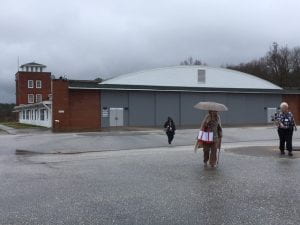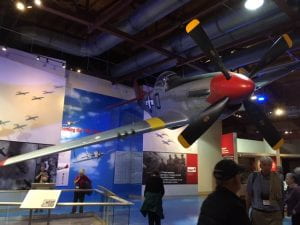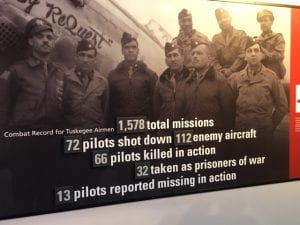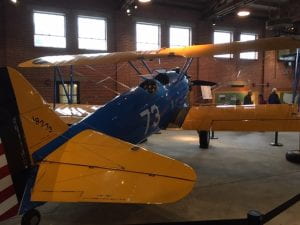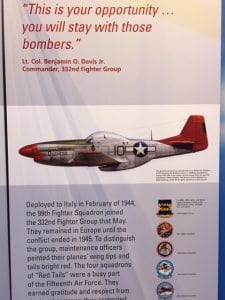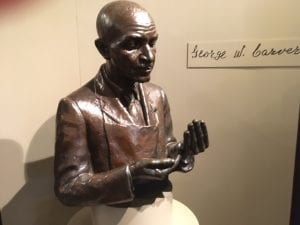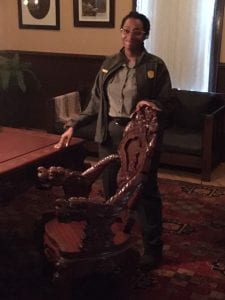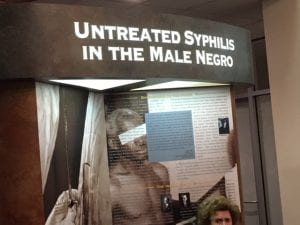“Double Victory,” they called it, victory in the air and at home for the Tuskgegee Airmen. The first class of black pilots and ground crew covered the victory in the air by downing 112 enemy planes in Europe, but prejudice at home was more entrenched and formidable. At Freeman Field in Indiana, Black flight officers tried to integrate the officers’ club and were blocked at the door.
The Armed Forces had already passed an ordinance forbidding segregation of the races, but on this base there were two officers’ clubs, and one excluded Blacks. One night in 1944 61 Black officers tried to push their way into the White club and were arrested. In the course of the military trial all but four were convicted on lesser charges and only one was dishonorably discharged. The battle at home was still fraught with besetting prejudice.
Below, see the record of accomplishments of the Tuskgegee Airmen.
George Washington Carver was a genius with agricultural and chemical science, but he was most interested in inventions that improved people’s lives. He made exhaustive use of the peanut, the sweet potato, and the soybean. He was a tireless teacher who believed in learning by doing and took on young apprentices his entire life at Tuskgegee Institute. His inventions are on display at the Tuskgegee Institute National Historic Site.
In 1856, Booker T. Washington was born into slavery in Virginia as the son of Jane, an African-American slave, who was emancipated while he was still a child.[6] Washington attended Hampton Normal and Agricultural Institute and the college at Wayland Seminary (now Virginia Union University). He became the first President of Tuskgegee Institute in 1881. As with most of the buildings on campus, his expansive nine-room home was built by the students of the Institute.
At right an ornate Japanese chair is displayed in his study at “the Oaks.” His house remains on the campus, owned by the National Parks Service.
We saw one of the more intriguing presentations of the day at the Tuskgegee Human and Civil Rights Multicultural Center: the movie Open Secret.
The movie dramatizes the re-conception of the Alabama State Constitution in 1901. A dozen well-dressed white men sit around a table planning to restrict the rights of the “Nigra” with various strategies to limit their suffrage, among them literacy tests and a poll tax, and their freedom, through the segregation of public spaces such as the rail car, public parks, cemeteries and libraries. All these measures reversed the reforms of the Thirteenth, Fourteenth, and Fifteenth Amendments to the U.S. Constitution, like similar state laws throughout the South, returning the rights of Blacks to pre-Civil War status.
A later Twentieth Century atrocity was the Syphilis study, which failed to treat participants during a medical study without their written consent. The study persisted over forty years under a federal grant before it was exposed as the brutality it was. The story of the study is well-documented on the main floor of the multi-cultural Center.

